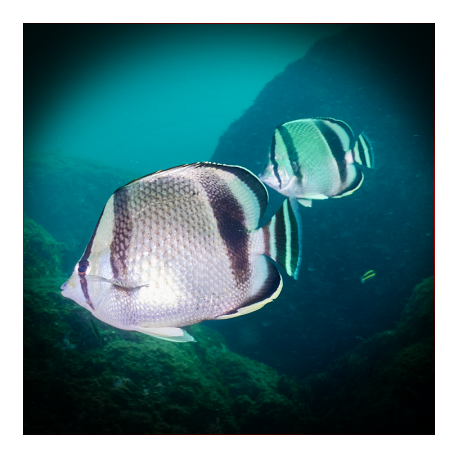More info
Datasheet
| Minimum Tank Size | 600 litres / 158.50 US gallons |
| Maximum Size | 25.0cm / 9.84inches |
| Reef Compatible | Not reef safe |
| Temperament | Peaceful |
| Temperature | 22.2°C / 71.96°F - 25.6°C / 78.08°F |
| Specific Gravity | 1.020-1.025 |
| Carbonate Hardness | 8-12 |
| pH | 8.1-8.4 |
General Description: The Threebanded Butterflyfish, scientifically known as Chaetodon humeralis, belongs to the Chaetodontidae family and is characterized by its striking patterns and vibrant colors. This species is part of a group of fish within the Chaetodon genus that are remarkably similar in appearance, making it essential to differentiate them accurately due to varying needs that some may have.
Aquarium Suitability: Classified as suitable with care, the Threebanded Butterflyfish demands a well-established aquarium with ample hiding spots among live rocks. It can be kept in pairs, prefers open spaces for swimming, and necessitates a varied diet that includes large polyp stone corals and soft corals. Feeding this species should be frequent, catering to their natural grazing habits and inclination towards algae-rich foods like Spirulina.
Care and Hardiness: Considered hardy, these peaceful fish require proper acclimatization and feeding routines, especially when initially introduced to the tank. To avoid potential health issues, it's crucial to acquire healthy specimens free from parasites or infections. Additionally, providing a diverse diet is essential to ensure their well-being and longevity in captivity.
Reef Suitability: The Threebanded Butterflyfish is not reef-safe due to its tendency to nibble on clams, including Tridacna species, and its preference for consuming tubeworms. These behaviors make them unsuitable for reef environments where delicate invertebrates are present.
Aquarium Setup: Setting up an aquarium for the Threebanded Butterflyfish involves creating hiding places with live rocks, maintaining a well-run system with algae for grazing, and ensuring a spacious environment for swimming. Water parameters should be closely monitored and maintained within the recommended ranges for pH, temperature, salinity, and carbonate hardness.
Behaviour: Known for their peaceful temperament, Threebanded Butterflyfish typically ignore other fish species and can coexist with multiple individuals of their kind. However, caution is advised when keeping similar species together unless they form a bonded pair, as conflicts may arise.
Feeding and Diet: Their diet should consist of a variety of foods such as larger crustaceans, microalgae like spirulina, other invertebrates, small crustaceans, and zooplankton. Offering live zooplankton or mimicking their natural feeding behavior by placing food in coral skeletons can help entice them to eat and maintain their health.
Habitat and Distribution: Found in the Eastern Pacific region from San Diego, California, USA to Peru, including the Galapagos Islands, the Threebanded Butterflyfish inhabits coral reefs with a preference for LPS corals. Their natural diet may include live SPS or LPS corals, bristleworms, anemones, and tubeworms, reflecting their ecosystem's diversity.

